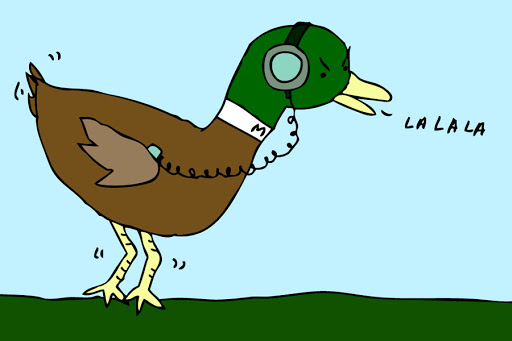Hear me out on this one.Disney Research in Pittsburgh, Pennsylvania, recently unveiled a cool, new technology that allows you to transmit a secret message simply by touching someone’s ear. The message cannot be heard by anyone else except the person whose ear is being touched.
It works like this: you record a message or sound with a microphone, which is in turn connected to a computer (could easily be your run-of-the-mill desktop computer, or iPad for that matter) that amplifies, loops, and converts the sound into an inaudible signal.
For all you cool fellow geeks out there, this inaudible signal is a low current (amperage), high amplitude (voltage) electrical signal that is then transmitted to your body while you’re holding onto the conductive, metallic casing of the microphone. This creates a modulated electrostatic field on your skin. (Translation: You now have an invisible force field around you!) When you touch either your own or someone else’s ear, the finger and ear canal combination acts as a miniature speaker and recreates the sound in the ear from the field’s vibration (waves).
Mass communications professors rejoice: this would make a fun one-on-one (as opposed to one-too-many) communications example in class. Unless of course, the one person with the message touches another, and that person touches yet another, and so on as the chain continues. It must have taken the researchers some trials to figure out the physics of how much power is needed for this transference before someone gets an unpleasant zap.
The researchers called their prototype “Ishin-Den-Shin” which translates literally from Japanese as “what the mind thinks, the heart transmits.” This is a reference to the traditional Japanese concept of “interpersonal communication through unspoken mutual understanding.” While not necessarily a brand-new concept, their prototype made waves in the 2013 Ars Electronica festival held in Austria, and was popular enough to be awarded an honorary mention.
I hear Disney is now thinking about using this new tech toy in their theme parks – in their rides and also to entertain people while they are waiting in line (anything to make the long lines and wait times more bearable!), but I think we can come up with some w-aaaa-y cooler ideas.
First off, since Disney is doing this, it would be a great deal more comfortable for me if it works also by touching Mickey’s ear-hats, as having strangers who are standing in line next to me put their fingers in my ear is a thought I find neither fun nor appealing. An even more frightening thought is that of a kid eating cotton candy and wanting to put her sticky fingers in my ear. Hygiene, people… hygiene! (Shudder.)
On a happier note, couples on dates don’t have to whisper sweet nothings to each other anymore. They could create never-ending loops of their poems and lyrical expressions of their love and narrow-cast it to each other with their fingers in each other’s ears. History would be forced to mark this momentous occasion as the romantic era in electronic communications. Just don’t be sticking fingers in each other’s ears during Mass.
But that’s not all. While the recorded sound or message cannot be heard unless the ear itself is touched, the energy of the electrostatic field can be transmitted through any sort of physical contact. This means that hugs, kisses, holding hands, and poking are all fair game. Talk about liberating new modes of interpersonal communication. It could revolutionize and transform messaging. How? As a teacher, I can picture a classroom full of students silently holding hands or touching each other’s ears, revolutionizing the whole passing-notes-in-class paradigm. Classroom texting, eat your heart out! In fact, the age-old telephone game – the one where a person whispers a message to the next person and the message gets all distorted by the time it reaches the last person in the chain – could be revitalized. With this new finger-speaker tech, the only ways the message could get garbled is if there’s some kind of electrical disturbance in the force (field, that is). Or ear infections. Or too much ear wax.
Speaking of kids, as I’m typing this, my kids are getting so loud in their play that I wish I could stick my finger in my ear and hear myself think. Seriously, here I’m telling my five-year-old to stop putting his fingers in his nose, and now I’ve got to deal with fingers in ears, too? No, thank you. I also don’t think we’re going to get a hole in the confessional screen to put our hands out to touch Father’s ear anytime soon. And I don’t care how secret this technology claims to be, but for the life of me I can’t see professional spies putting fingers in one another’s ears. Can you imagine how emasculating it would be for 007 to be putting his finger in a fellow spy’s ear? Hollywood would have to find the right character for this one-finger act. A remake of E.T. maybe, phoning home with his glowing finger in Elliot’s ear.
And speaking of phones, it’s also easy to extrapolate that your iPhone could potentially act as both microphone and transmitter, converting your songs into a modulated electrostatic field around your body. Then you could just plug your finger in your ear to hear your music collection. And you know what? This would technically still count as a wireless technology. It could even be in stereo if you have one finger in each ear, the consummate picture of shutting the world out. I can see the headlines in parenting magazines now: “Kids have fingers in ears. Parents don’t want to hear about it.”
I suspect that all these examples explain why Disney’s finger-speaker tech won the (fun) honorary mention award and not first place. Is this a technology that will support more humanitarian applications? Will we be hearing more of it? Time will tell. Just don’t tell it to me with your finger in my ear.

